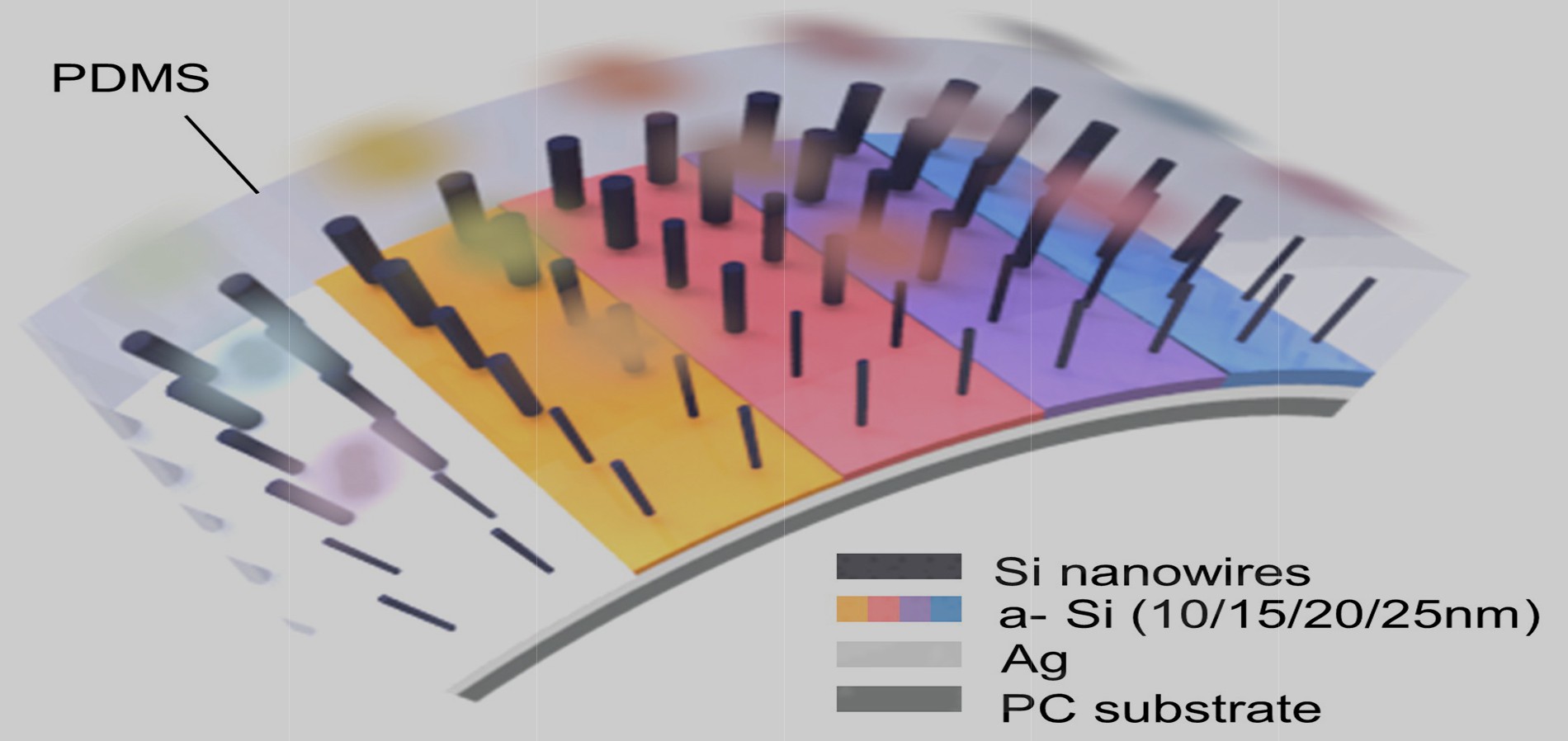2019.03.05
GIST (Acting President Hor-Gil Hur) – Professor Young Min Song of the School of Electrical Engineering and Computer Science and Dr. Il-Suk Kang of KAIST have identified the principle of color filter structure that can express various colors by folding nanophotonic structures (optical phenomena caused by surfaces or particles formed on a nanometer scale) based on silicon and succeeded in designing and fabricating an optimal filter structure. In addition, the researchers presented a new method to use as the anti-counterfeit hologram sticker using the fabricated structure.
Typical color filters are based on dyes and pigments. These are difficult to recycle because they are made by mixing various chemicals to create various colors, and they are not environmentally friendly. Furthermore, another disadvantage is that ultraviolet (UV) light causes light discoloration * phenomenon to occur.
To solve this problem, research has been undertaken to make color filters using structural colors that do not use dyes or paints, and this has been applied to a variety of fields such as displays, exterior walls, and semiconductor devices. However, existing structural colors have disadvantages based on rigid insulators or semiconductor materials, and limited color representation presents them from completely replacing existing color dyes.
The research team used two stacked nanophotonic structures just several tens of nanometers thick to adjust the reflection spectrum of the visible light band to fine-tune and express colors with high purity. They also fabricated a folding color filter based on the excellent mechanical properties of the nanostructure.
The researchers also demonstrated theoretically and experimentally that each layered resonant structure becomes linear without interference between structures. Based on these principles, the optimal structure was designed and color filters were implemented through actual fabrication.
When the proposed nanophotonic structure is used, it is possible to improve the narrow color representation ability which is a disadvantage of the existing structure color filter, and the color can be finely adjusted on the color coordinate system. In addition, silicon nanowire arrays are removable and reusable.
Professor Young Min Song and Dr. Il-Suk Kang said, "This research can easily be applied to mature semiconductor devices and technologies while solving shortcomings of existing structure color. It can also be applied to a variety of areas that use semiconductor materials such as ultra-thin optical filters, solar cells, and flexible displays. In particular, the application of the anti-forgery hologram sticker made during this research is possible."
This research was led by Professor Young Min Song of GIST and Dr. Il-Suk Kang of KAIST with Han Sung Song and Gil Ju Lee of GIST as co-first authors and was supported by the National Research Foundation of Korea, the Agency for Defense Development of Korea, and by the GIST Research Institute. The research was published in Scientific Reports on March 4, 2019.















